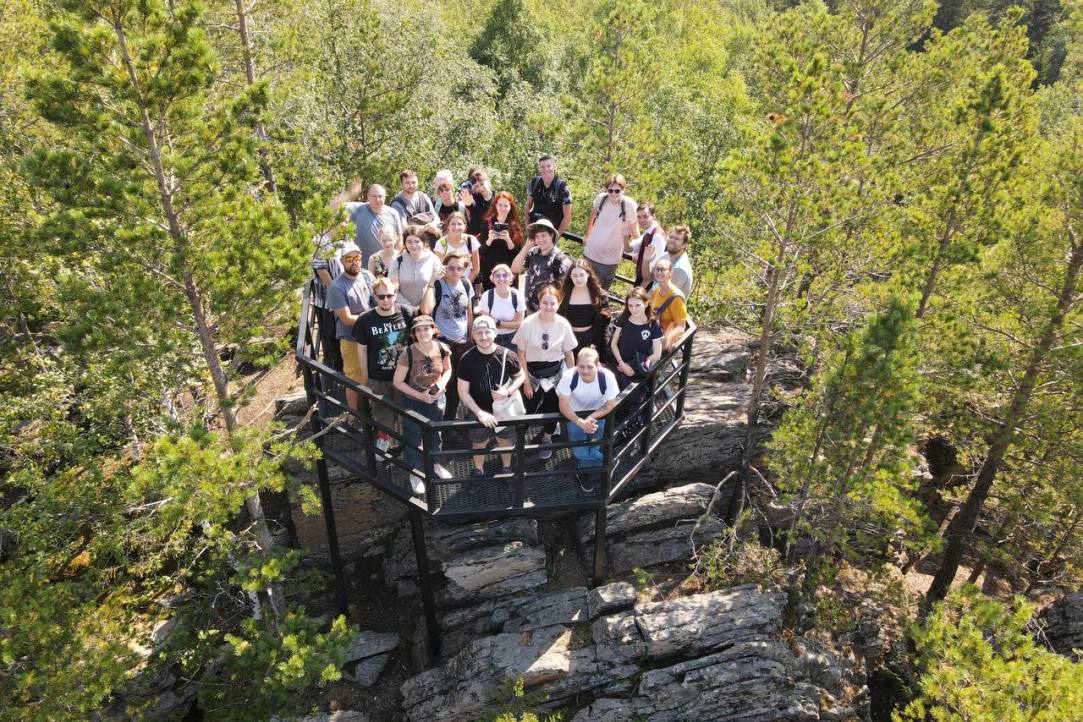HSE Students Explore Environmental Problems at Summer School in South Urals

The summer school 'Space in/for Environmental Humanities: Reconsidering the Global through Studying Peripheries' explored the impact of human activity on natural environments and their transformation. It was co-organised by the School of Environmental and Social Studies (Anthroposchool) at the University of Tyumen (TSU) and the HSE Poletayev Institute for Theoretical and Historical Studies in the Humanities (IGITI), with support from the Mirror Labs programme of HSE University.
The summer school was held on Lake Turgoyak in the Urals’ Chelyabinsk Region, a location on the border between Europe and Asia which is known both for its natural wonders and protected areas and for its high concentration of various industries.
The school’s multidisciplinary approach was reflected in the selection of both speakers and participants, who included students of history, culture, geography, architecture, and sociology. The speakers presented an outlook on environmental problems from historical and modern perspectives.
Alexandra Bekasova and Margarita Dadykina, research fellows of the Laboratory for Environmental and Technological History at HSE University-St Petersburg, provided an update on this field of research. The school's special focus was on studying peripheral spaces. IGITI Director Boris Stepanov and Leading Research Fellow Roman Abramov discussed regional studies as an approach to learning about the periphery and its cultural role in the past and present. Svetlana Kravchuk, Director of the School of Arctic Design in Yekaterinburg, explained how designers get inspired by studying amateur art and crafts by people living in remote regions.
But the school's main idea was to engage each participating student in a research project that was later reviewed and discussed in detail. The school organised two field trips: one to Taganay National Park and the other to Karabash, a city that until recently was considered one of the most polluted places on the planet. Based on their field research, the students prepared photo essays that captured various facets of interaction between humans and nature.
In addition to making space for participants to discuss their projects from the broad perspective of environmental sciences, the school facilitated first-hand experience and exploration of Russia's remote areas.
Roman Gilmintinov, Senior Researcher at the TSU Anthroposchool, Doctoral Student at Duke University
'The school has demonstrated that environmental humanities are becoming a new point of assembly for a range of topics and issues. Mobility studies and urban studies, industrial pollution and extractivism, imperial spaces and the role of science in modern society—the school provided a new perspective on these familiar topics. Perhaps the most unusual thing for me was to see two participants studying very different disciplines—history and geochemistry—to address the same issue of forest fires in their research projects. While they used different methods, looked at different timelines, and arrived at different conclusions, both needed to find a common ground and to develop a language which all participants in the discussion could understand.’
Daria Khokhlova, fourth-year Bachelor's in Philosophy, HSE University
'Karabash had a striking effect on me. After listening to an academic lecture on ecology and chemical processes, we went out into the field and saw first-hand what it was all about. We talked with the locals and found that all those various perspectives simply refused to come together into a single objective picture. I would like to see more of this format of learning, where you first look at an environmental problem from a distance and then get a first-hand perspective.'
Elina Kochereshchenko, second-year Master's in History of the Modern World, HSE University
'The most memorable thing for me was our trip to the Karabash copper smelter, in particular observing the atmosphere around it. It reminded me of the Chernobyl man-made disaster. In Karabash, the human impact was stretched out across time: the copper plant saw the Russian Empire, the USSR, and the difficult 1990s. The plant survived, but nature did not. The area around it is like a Martian landscape, with industrial tailings penetrating what was once living soil. Meanwhile, life is in full swing at the plant, with trucks moving back and forth and thick grey dust enveloping the workshops.'
Roman Abramov
Leading Research Fellow, Poletayev Institute for Theoretical and Historical Studies in the Humanities
Aleksandra Bekasova
Senior Research Fellow, Laboratory for Environmental and Technological History
Boris Stepanov
Director, Poletayev Institute for Theoretical and Historical Studies in the Humanities

